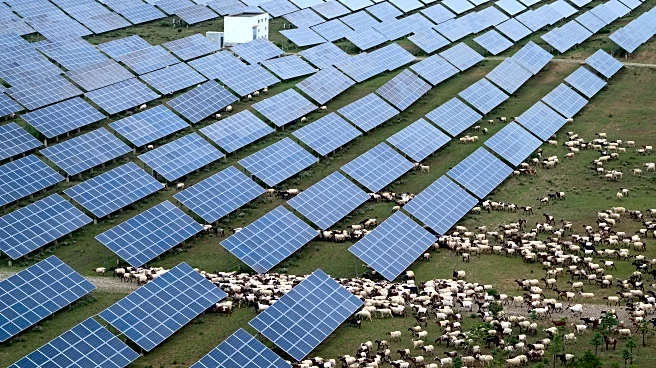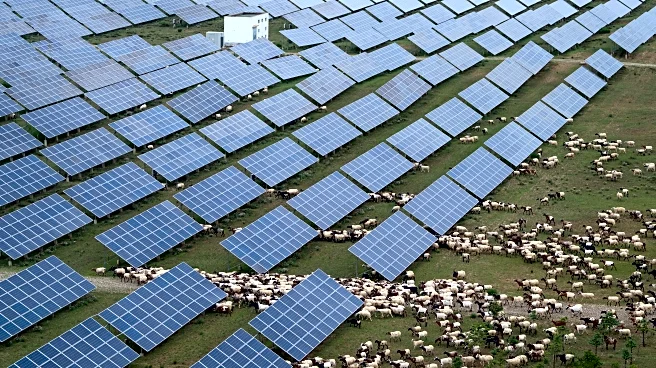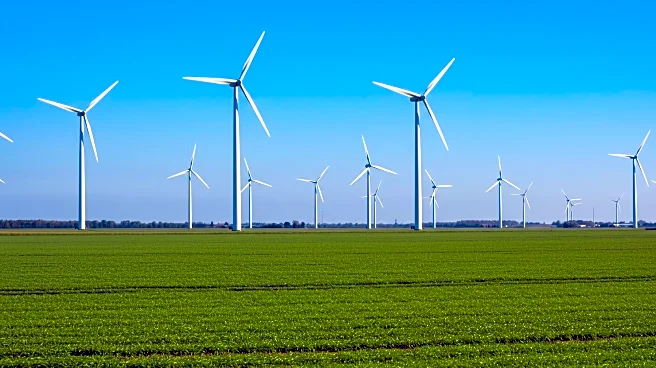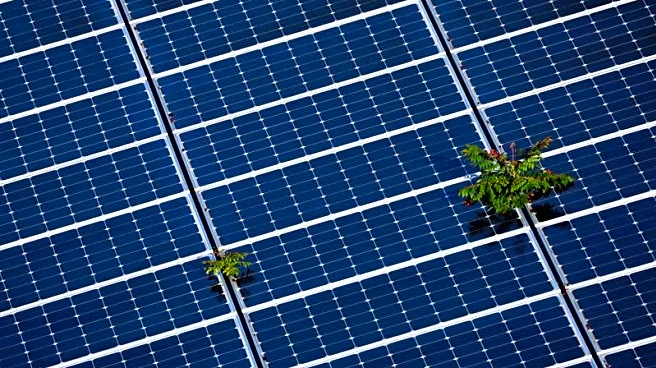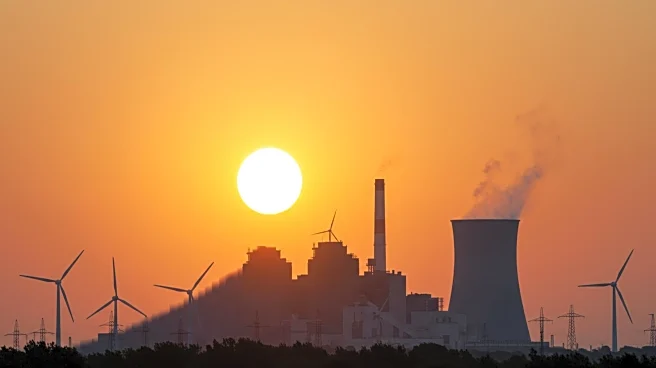Rapid Read • 7 min read
China is rapidly expanding its solar energy capacity, with the construction of what is expected to be the world's largest solar farm on the Tibetan plateau. This project covers 610 square kilometers and aims to significantly reduce carbon emissions. A recent study indicates that China's carbon emissions have decreased by 1% in the first half of 2025 compared to the previous year. This decline is attributed to increased solar, wind, and nuclear energy production, which has outpaced the growth in electricity demand. The solar farm, once completed, will provide power to approximately 5 million households.
AD
China's efforts to expand its solar energy capacity are crucial in the global fight against climate change. As the world's largest emitter of greenhouse gases, China's reduction in emissions is a positive step towards achieving carbon neutrality by 2060. This development demonstrates that economic growth can be achieved alongside environmental sustainability. The shift towards renewable energy sources is essential for reducing reliance on coal and mitigating climate change impacts.
China will continue to build transmission lines to distribute solar energy from the sparsely populated west to the industrial east. Policymakers are working to adapt the electricity grid to accommodate the variable output of renewable energy sources. These efforts will require significant changes in the operation of coal-fired power plants and the transmission network. The success of these initiatives will be critical in achieving China's long-term environmental goals.
The solar farm project also has ecological benefits, as the panels act as windbreaks, reducing dust and promoting vegetation growth. This has allowed local communities to engage in sustainable practices, such as sheep grazing, alongside energy production. The integration of renewable energy into the landscape represents a holistic approach to environmental management.
AD
More Stories You Might Enjoy
